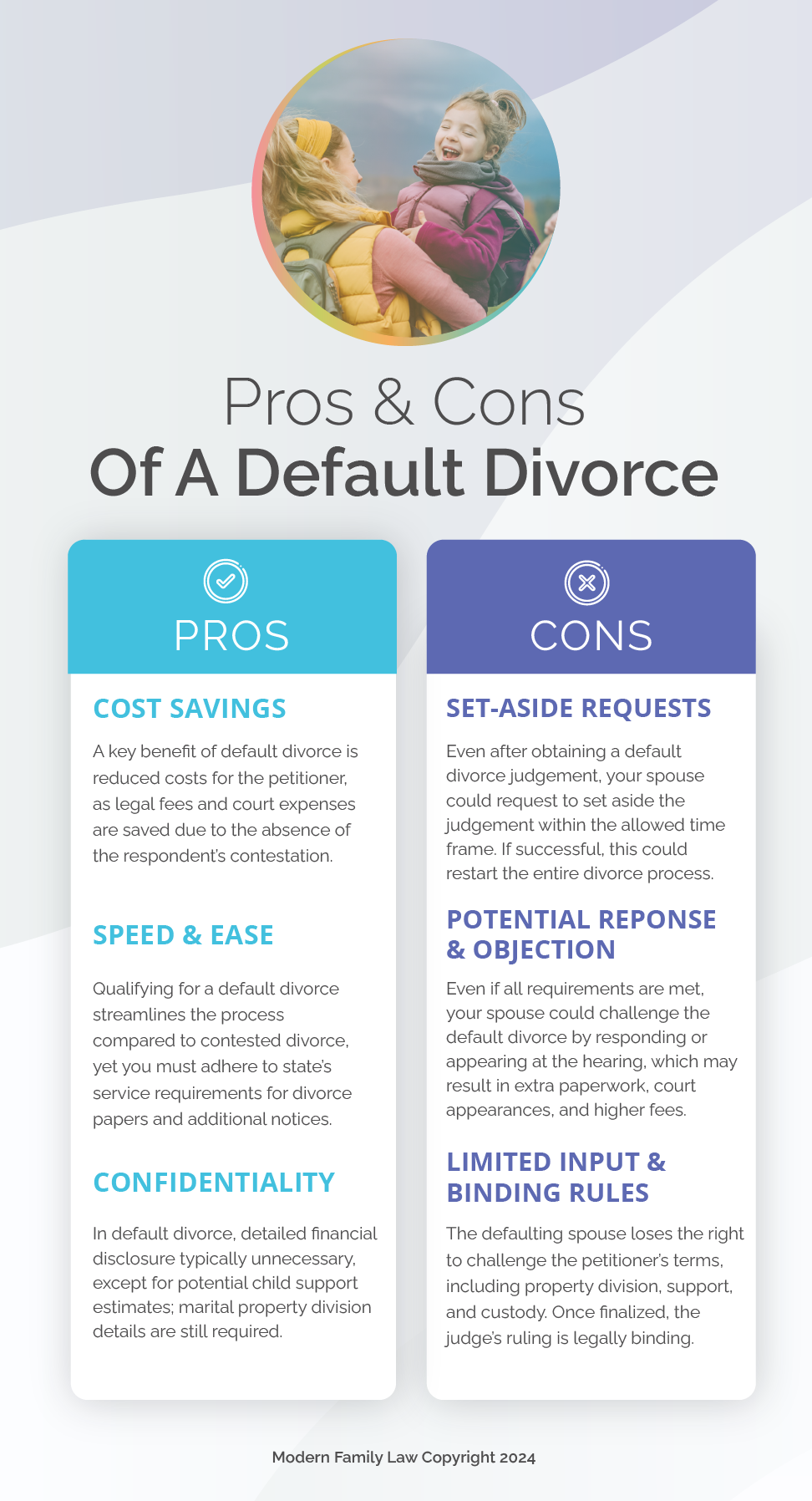Initiating A Default Hearing
The process of initiating a default hearing in family law cases typically involves the following steps:
1. Filing The Initial Petition: The petitioner (the party who initiates the legal action) files an initial petition outlining their claims, demands, and the relief sought from the court.
2. Serving The Defendant: The defendant (the party being sued) must be properly served with a copy of the petition and a summons, which notifies them of the legal action and the need to respond within a certain timeframe.
3. Response Deadline: The defendant is given a specific period, often dictated by local rules, to respond to the petitioner’s claims. This response is usually submitted in the form of an answer or counter-petition.
4. Failure To Respond: If the defendant fails to respond within the stipulated timeframe, the petitioner can request the court to schedule a default hearing.
5. Default Hearing Process: During the default hearing, the petitioner presents their case, providing evidence to support their claims. The judge evaluates the evidence and considers the petitioner’s arguments.
6. Judgment: During the default hearing, the petitioner presents their case, providing evidence to support their claims. The judge evaluates the evidence and considers the petitioner’s arguments.






